Butte Vauquois
In September 1914, after the initial advance into France had been
halted, the Germans once again went on the offensive, capturing land
south of Verdun, an area that would be known as the St. Miheil
Salient. The salient cut off one of the two major rail lines
into Verdun. On September 22nd, the Germans attacked south in the
Argonne Forest, gaining several kilometers including a butte rising 70
meters above the surrounding land, with the
town of Vauquois on top. Butte Vauquois overlooked the remaining
rail line into
Verdun. The Germans could direct fire on the railroad, just six
kilometers from the butte. In a matter of a few days, the
Germans had reduced the supply line of Verdun to a country road and a
narrow guage railroad from Bar le Duc. Starting on October 28th,
the French began attacking the butte, without much success. In
December, the French high command took note of the Verdun's
tenuous supply situation and ordered the capture of the butte.
On February 17, 1915 the French attacked again, with the first
use of mines at the butte. Attacks continued into March. On
March 4th, the French reached the top, but the
two sides still faced each other across the ruins of the town. In
some cases, the lines were just nine meters away from each other.
In March 1916, the Germans blew four tons of mines, the French twelve.
On May 4th, the Germans blew sixty tons of mines. Mining
continued, and eventually, the top of the butte became two ridges
separated by mine craters. Attacking across the craters was
impractical. Both sides saw an escalation in the mining as the
solution. While the Germans hoped to blow off the entire
top of the butte, the French hoped to simulateously detonate three
mines
of 145 tons each. To put that into persepctive, the Lochnager
Crater at the Somme, which was 300 feet across and 70 feet deep, was
the result of a single 30 ton mine. Only during the American
Meuse-Argonne offensive
in the fall of 1918 was the butte finally captured. In all, 519
mines were detonated.
The French accounted for 320 of these, amounting to 664 metric
tons of explosives.
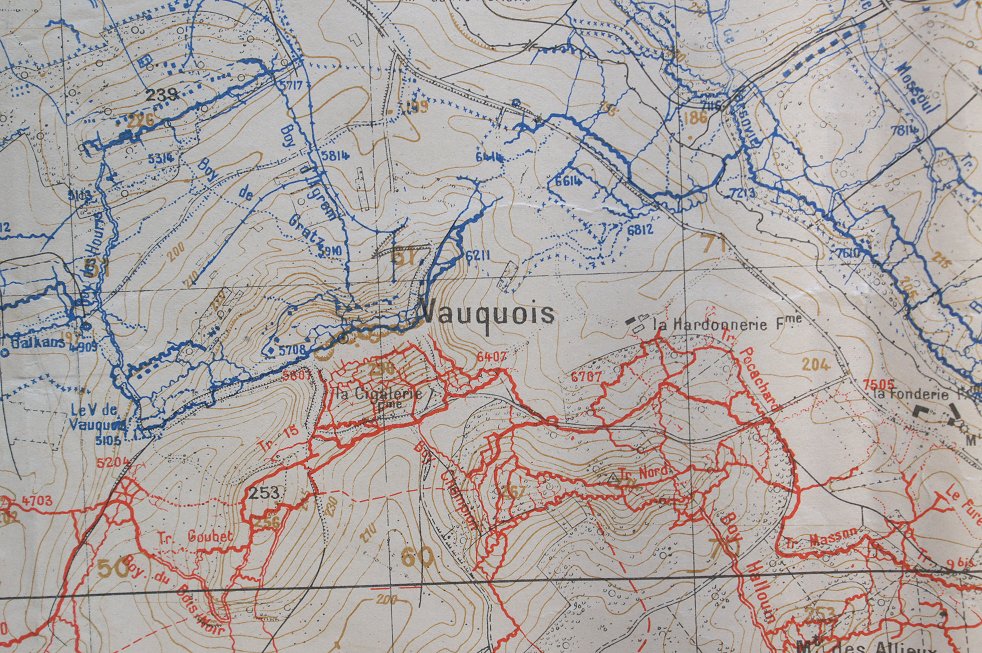
1918 Trench Map From George C. Marshall Library
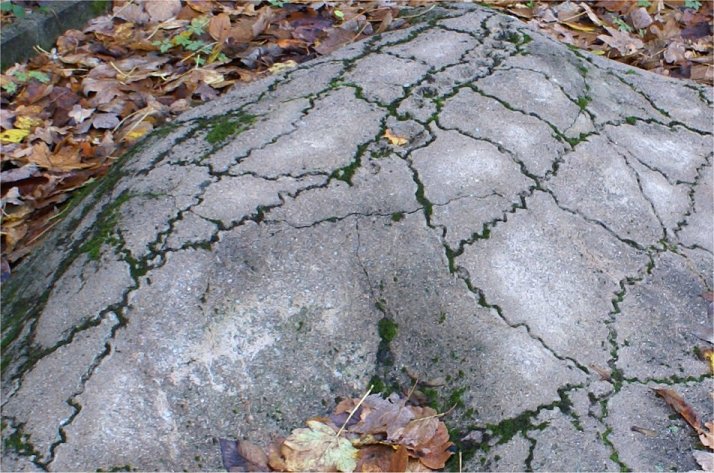
Concrete Model of Butte

Map of Butte
The arrow shows the tour trail.
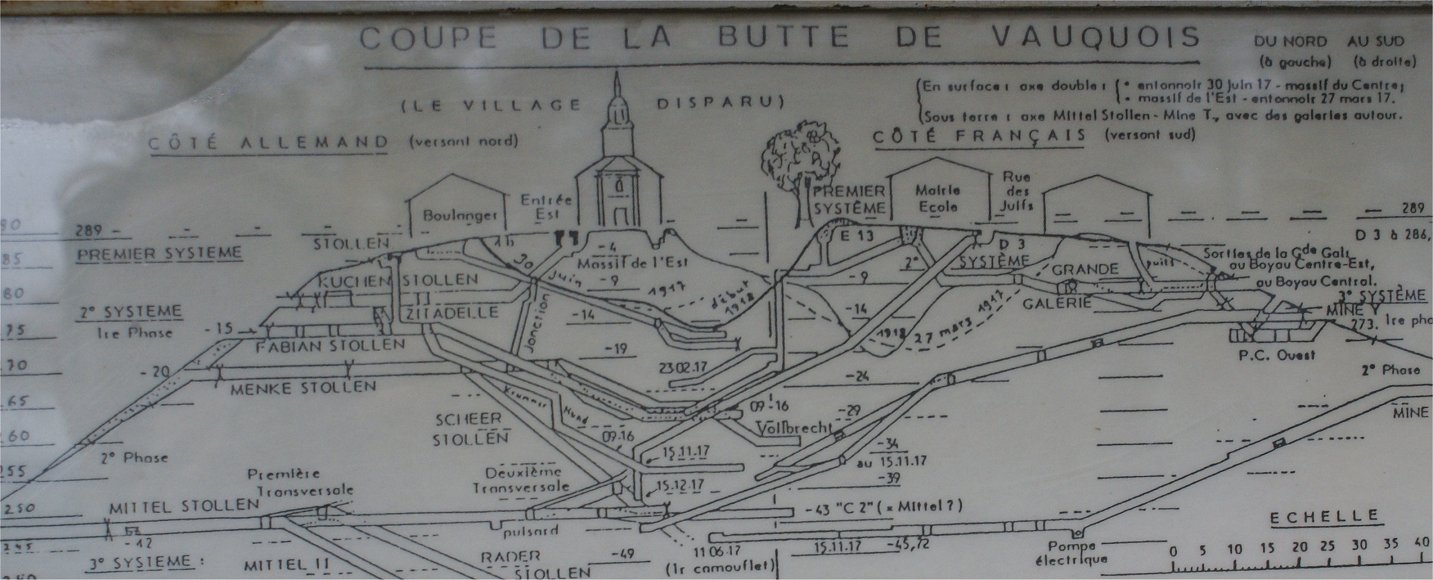
Cross Section of the Butte
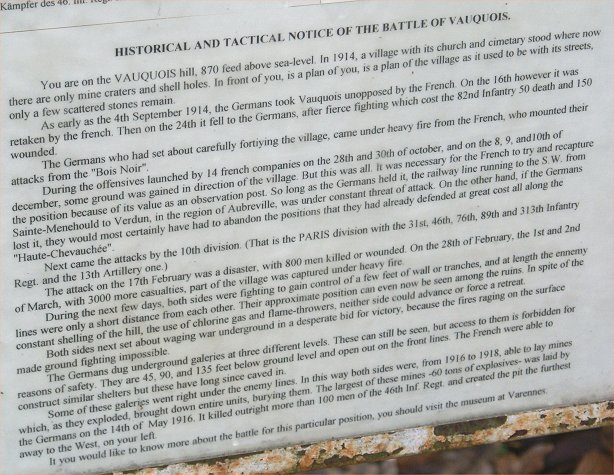
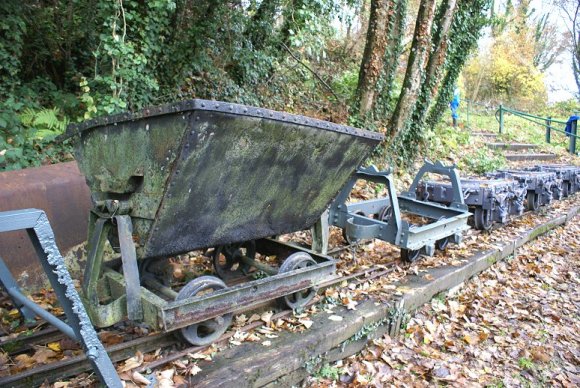
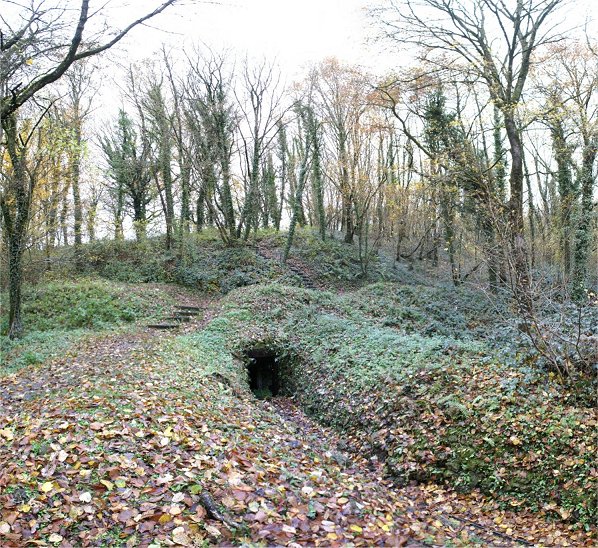
Mine shafts were dug into the side of the butte.
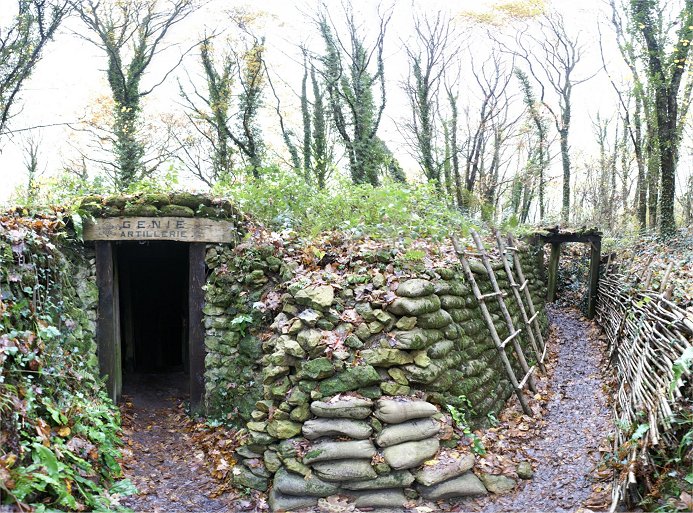

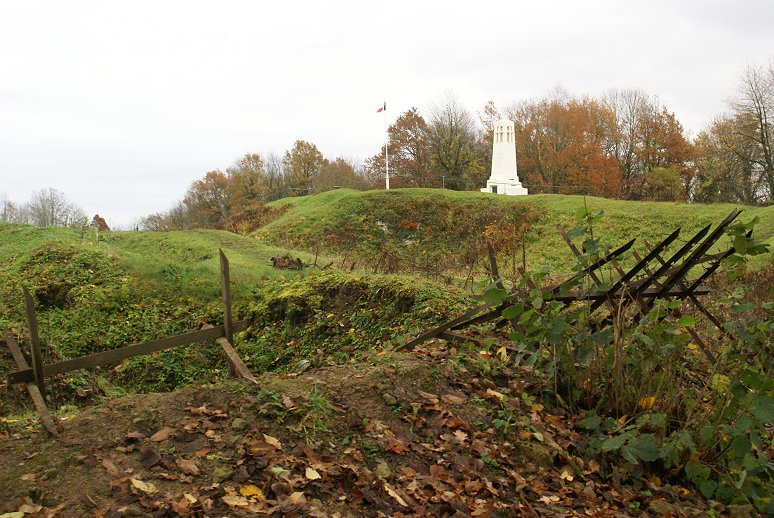
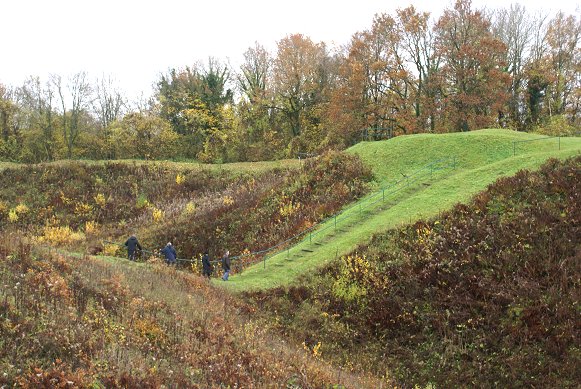
From the German Side
The Lanterne des Morts is lit on special occasions. For scale, note the tourists walking along the path.

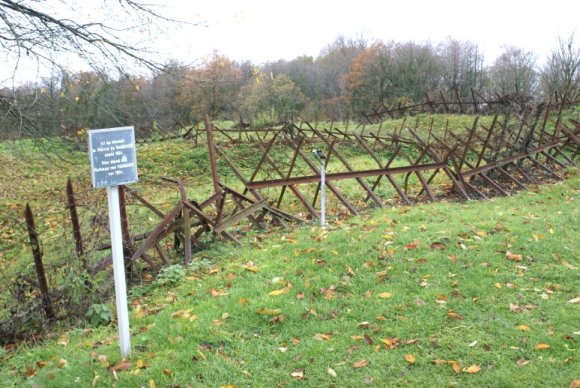
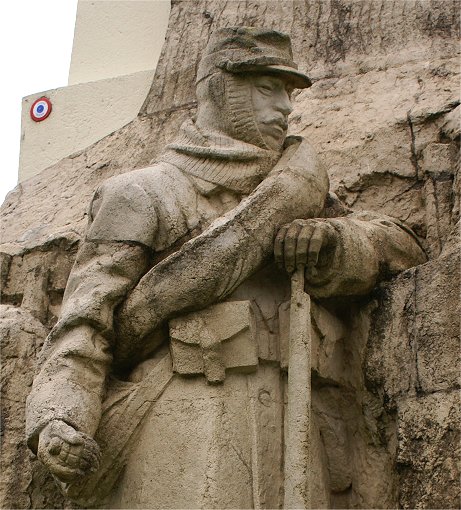
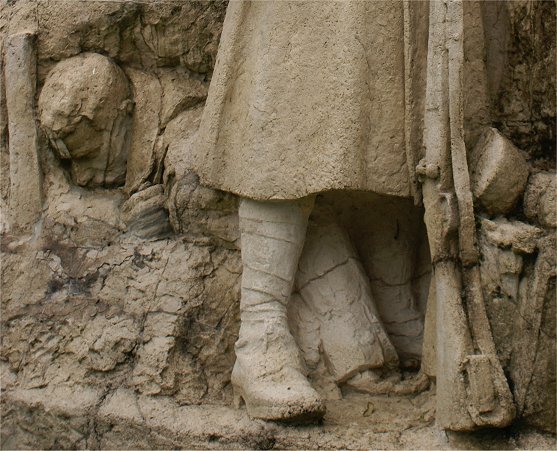
From the French Side



For scale, note the tourists walking along the path.


From the German Side
Copyright 2010-11 by John Hamill



















